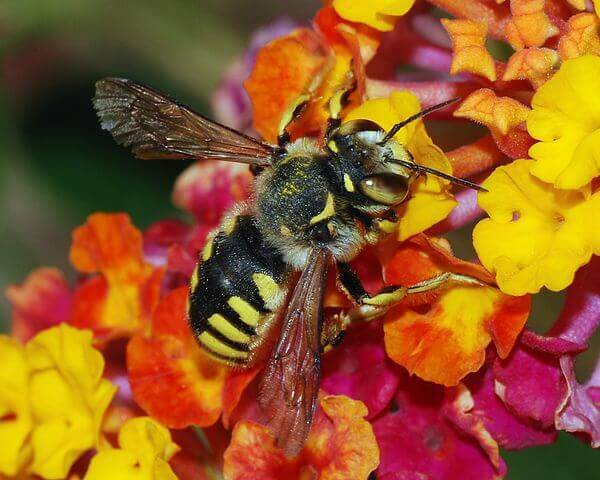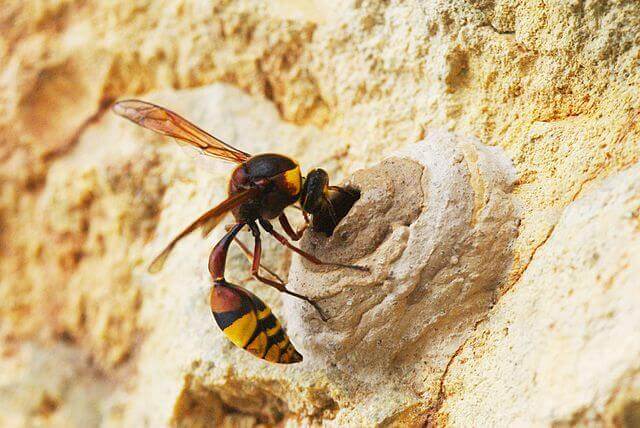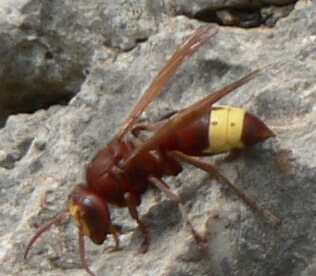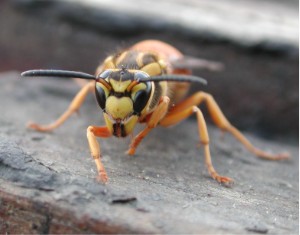Stinging Pests
During the warm, summer months stinging insects build nests inside attics, gutters, decks, eaves, or any other suitable location for their hanging habitats. The stings from bees, hornets, wasps, and yellow jackets not only hurt, but could cause serious health issues in individuals who are allergic.

By Alvesgaspar (Own work) [GFDL or CC BY-SA 3.0], via Wikimedia Commons
Bees
Order Hymenoptera
Bees are flying insects with constricted waists, four wings and light- to densely-haired bodies (especially on the thorax). While most people think of bees as being yellow and black, they also can be black or brown with red, yellow, or blue stripes. Bees are responsible for pollination between plants and some species produce honey and beeswax. Bees are beneficial to the environment but it is dangerous to let them live near your home. Because the only way to remove bees from the premises is to relocate the hive, it is recommended that you contact a pest control professional to safely handle the task.

By Ian Alexander (Own work) [CC BY-SA 4.0], via Wikimedia Commons
Wasps
Order Hymenoptera
Hornets and yellow jackets are a type of wasp. All wasps have two pairs of wings with a pinched waist. Their size varies depending on the species. They are categorized as being either social or solitary in nature. While some species are important pollinators, as a whole they are not as effective as bees. They do prey on numerous pest insects that damage crops and other landscape plants. Contact a pest control company to learn more about your options if you discover a potential threat from wasps.

By Kreta (self made by Kreta) [Public domain], via Wikimedia Commons
Hornets
Order Hymenoptera
Most large, stinging insects are misidentified as hornets. There is only one true hornet, vespa crabo or the European hornet, found in the United States. The adult is roughly 1 inch to 1.5 inches long and reddish-brown. They usually are not aggressive but will sting if disturbed. If you suspect there is a hornet nest near your home or office, contact a local pest control company to safely remove the nest.

By Pollinator.Pollinator at en.wikipedia [GFDL, CC-BY-SA-3.0 or GFDL], from Wikimedia Commons
Yellow Jackets
Vespula spp. and Dolichovespula spp.
Most yellow jackets are black and yellow but some are black and white. They live in colonies and have a distinct rapid, side-to-side flight pattern. Yellow jackets are often mistaken for bees due to their similar size and appearance but this insect is actually a wasp. Yellow jackets have lance-like stingers with small barbs, and usually sting repeatedly, sometimes losing their stinger if it becomes lodged. Because they are typically beneficial pests, they should only be removed when they pose a threat to pets or people.
